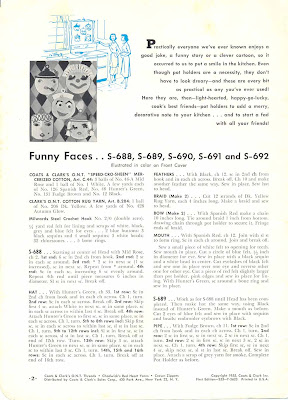
This postcard advertising back to school fashions was actually sent to me back when I was in high school. I was "personally" invited to "preview the season's most exciting sweaters, companion skirts and all the best co-ordinated sportswear."
Plaid is again--or maybe still--popular for fall. Try googling "plaid for fall" and you will get a lot of hits. Vintage and retro fashions are popular too. I kind of like those brown saddle shoes, but I can't see myself wearing that kind of clothes now. Do you think you could wear things like this without feeling ridiculous?
Plaid is again--or maybe still--popular for fall. Try googling "plaid for fall" and you will get a lot of hits. Vintage and retro fashions are popular too. I kind of like those brown saddle shoes, but I can't see myself wearing that kind of clothes now. Do you think you could wear things like this without feeling ridiculous?










































